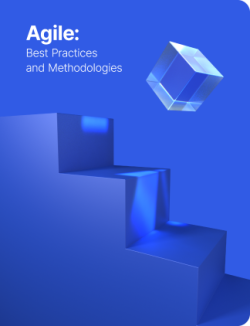Stage-gate Model
What is the stage-gate model?
Definition of the stage-gate model
The stage-gate model is a technique used in product development to manage the movement from one phase to the next. Each phase, or "stage", of the project, is separated by a figurative "gate" that prevents you from progressing onto the next milestone without sufficient pause for thought.
When using the stage-gate model in new product development, teams will typically progress through five phases: Discover, scoping, business plan concept, development, testing and validation, launch, and implementation. Each phase plays a crucial role in launching a successful product, and shortcuts throughout the process only serve to add risk and uncertainty to the development journey.
Before moving from one phase to another, teams should decide whether or not the project is ready to progress — avoiding concurrent development. When a gate is reached, teams will have to decide how to move forward, which can be answered by any of the following decisions:
Go. This means that the project is a success so far and you're ready to move on.
Kill. This means the project is not a success and should be abandoned.
Hold. This means the project is not strong enough to continue but not bad enough to be abandoned. Instead, it is put on hold until a better time, typically when more resources are available.
Recycle. This means the project has led to positive progress, but you believe this progress should be invested in another project. Instead of moving forward, the project changes shape.
The stage gate process from idea to launch
The stage gate model follows an iterative process. Each stage is completed and followed by a checkpoint, or “gate.” The name and number of these stages can vary depending on the project, but most follow the same template which we’ll look at now.
Idea
The idea stage is used to brainstorm potential new projects. This involves performing market research to identify gaps in the market and holding discussions to flesh out ideas. This stage can involve team members, customers, and stakeholders.
Scoping
The scoping stage allows teams to deep-dive the most promising ideas from stage one to figure out the project’s viability. This can involve more market research and is a great opportunity to run a SWOT analysis.
Business case
Before starting to develop the product, teams should build a strong business case for the project. This stage will involve creating a detailed product definition and a feasibility study if required.
Development
The development stage should result in a functional, ready-to-launch product. This will be the most intensive stage in the stage gate model.
Launch
The launch stage involves creating a strong marketing strategy that will increase product awareness and consumer demand.
Pros and cons of the stage gate process for product development — and how to do it right
When done correctly, the stage gate process will improve your product development process. But it’s not without pitfalls. Stage gating needs teams to develop governance to enable project delivery. Incorporating digital tools into the stage-gating process can help improve your team’s efforts.
Pro: Saves time and money
It may feel counterintuitive to reject ideas while pushing for innovation, but not all ideas are worth pursuing. The stage gate model helps identify low-quality ideas before you spend too much time and money on them.
Pro: Prevents siloing
Stage gating involves multiple team members and spreads accountability throughout the team. This ensures openness between team members and prevents scope creep.
Pro: Brings structure
The stage gate model offers a structured way to discover the viability of an idea. It standardizes the process to ensure consistency between products.
Con: Too many stages affect your flow
Bureaucratic hurdles get introduced with every stage you add to the process. This can slow down the development process because the team is focused on checkboxes rather than value.
Con: Introduces conformity
Creativity can be hampered by having a generic set of steps for each project. Teams using stage gating for every project can risk producing sub-par products or canceling a promising project altogether since they don’t have the space to be creative.
Con: It’s often done incorrectly
It can be easy to ignore evidence to justify pushing on with a project. Failing to properly enforce stage gates can hamper the project and allow HiPPO to control the development process. Stage gates need objective, measurable, and agreed-upon goals that clearly indicate when each stage is complete.
General FAQ

Glossary categories
Experience the new way of doing product management

Experience the new way of doing product management








